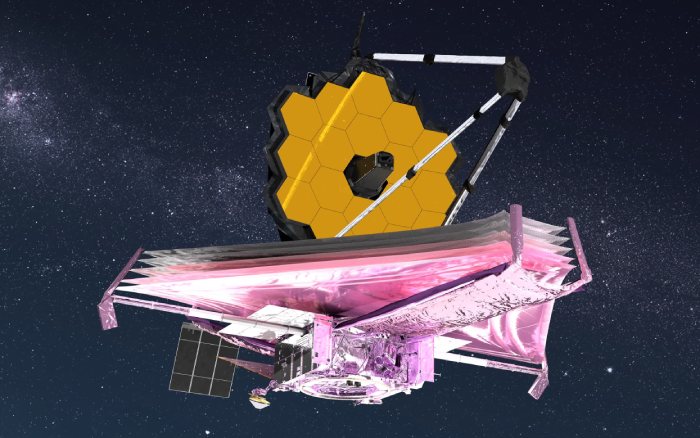NASA engineers are spending the day researching the giant James Webb Space Telescope’s power subsystem to ensure the telescope is ready to perform a critical procedure: tensioning its vast sunshield.
The Webb space telescope, which launched on Dec. 25, is currently undergoing a month-long deployment operation to ready it for data collection. However, the majority of the phases in that procedure are managed from the ground: While NASA has a rough timeframe for the work, mission management may opt to change it as the project progresses. After taking Saturday (Jan. 1) off, the Webb team will analyse the observatory’s power subsystem on Sunday (Jan. 2), NASA stated.
“Nothing we can learn from simulations on the ground is as good as analysing the observatory when it’s up and running,” said Bill Ochs, Webb project manager at NASA’s Goddard Space Flight Center in Maryland, in a statement released Sunday (Jan. 2). “Now is the time to take the opportunity to learn everything we can about its baseline operations. Then we will take the next steps .”
The temperature of a set of motors that will be employed during sunshield tensioning, the procedure that separates and smooths the five fragile layers of the kite-shaped sun deflector, is of special interest to the team. (Because Webb specialized in infrared studies, which are heat sensitive, the sunshield is an essential part of the observatory.)
In the same release, Mike Menzel, Webb’s lead systems engineer at GSFC, said, “We’ve spent 20 years on the ground with Webb, designing, developing, and testing.” “We’ve had a week to see how the observatory actually behaves in space. It’s not uncommon to learn certain characteristics of your spacecraft once you’re in flight. That’s what we’re doing right now. So far, the major deployments we’ve executed have gone about as smoothly as we could have hoped for. But we want to take our time and understand everything we can about the observatory before moving forward.”
The sunshield tensioning is a time-consuming process that NASA estimates will take two days. NASA had planned to begin work on Saturday, but Friday’s operations took longer than expected, so the team decided to rest on New Year’s Day.
When mission managers chose to look at the motor temperatures more closely, they didn’t want the team to be working on two different parts of the observatory at the same time.
The team will deploy the secondary mirror after the sunshield has been properly tensioned.
Despite the fact that deployment has come to a halt, the observatory is still moving forward. Webb was more than 510,000 miles (825,000 kilometres) away from Earth as of just before 3 p.m. EST (2000 GMT), or 57 percent of the way to its final destination of the Earth-sun Lagrange point 2. In the opposite direction from the sun, that point, also known as L2, is about 1 million miles (1.6 million kilometres) away from Earth.
- IPL Icon MS Dhoni Makes Unbelievable Record Against SRH - April 26, 2025
- Cougars Coach Kelvin Sampson Chases 800th Career Victory in NCAA Finals - April 8, 2025
- How to Check IIT GATE 2025 Results Online? Complete Guide - March 19, 2025



